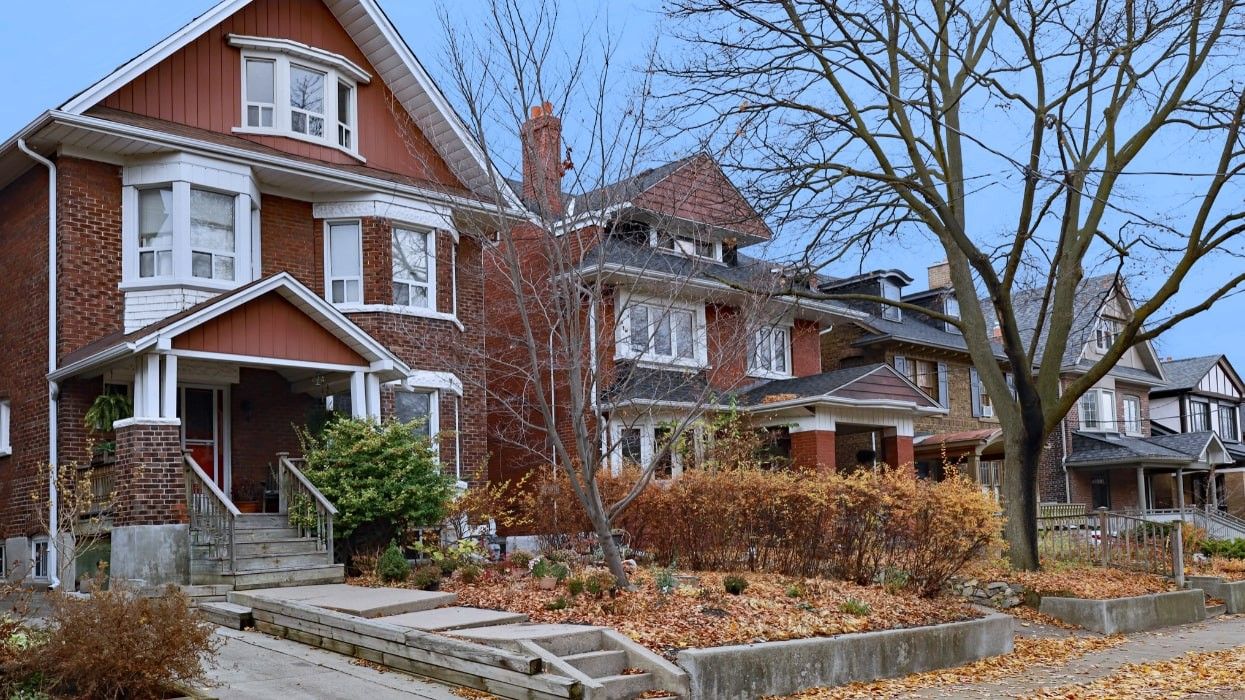The federal government appears to be making a concerted effort to address Canada’s chronic housing shortage and ever-worsening affordability issues.
The feds’ fall economic statement, presented on Tuesday by Finance Minister Chrystia Freeland, includes a heap of housing-focused measures intended to boost rental supply and ease Canadians’ financial strain.
Highlights include $15B towards loans for new rental buildings, $1B for the construction of affordable housing, and $309.3M for the development of co-operative housing.
There’s also The Canadian Mortgage Charter, a six-point plan that outlines new rules financial institutions must abide by as they deal with an increasing number of at-risk homeowners, such as allowing temporary extensions of amortization periods and removing the mortgage stress test for insured borrowers seeking to switch lenders upon renewal.
In her parliamentary address, Freeland said that it will take all levels of government, the private sector, and non-profits working together to build the homes that Canada needs.
"Our government is doing our part, and we are approaching this task with the purpose, drive, and intensity it deserves," Freeland said.
But provincial politicians, housing advocates, and industry leaders don’t necessarily agree.
Tim Hudak, the CEO of the Ontario Real Estate Association, tells STOREYS the fiscal update made "important progress" on getting roofs over more people’s heads, but that the disconnect on rental and social housing between federally elected officials and federal agencies, like the Bank of Canada and the Office of the Superintendent of Financial Institutions, means that real improvements to affordability will be difficult to realize.
On the industry side, Richard Lyall, President of the Residential Construction Council of Ontario, said measures like loans for rental construction and assistance for mortgage holders are a “step in the right direction,” but that the fall economic statement falls short, considering the gravity of the housing crisis.
"This is a $150B-plus-a-year industry. Fifteen billion dollars starting two years from now and spread over just a few years is theatrics. It’s not serious," Lyall told STOREYS. "We’ve got a crisis now. A crisis by definition requires urgent, immediate attention. A year and a half from now is not going to cut it. Fifteen billion is a big number, don’t get me wrong. But when you look at the scale of the housing deficit, it’s a trillion-dollar problem. This budget is not going to deal with it."
To have that immediate effect, the federal government should cut taxes and development charges associated with the purchase of new owner-occupied homes, and make more of an effort to speed up the painfully long approvals process.
"Housing is the most important thing in most people's lives, and it’s the most expensive thing. It’s a need. Like food, shelter is not an optional item," Lyall said. "Between charges and taxes and housing prices, young people are getting screwed. We’re supposed to be leaving the world a better place than when we entered it. My parents did that for me. I can’t say the same thing to my kids."
Peter Bethlenfalvy, Ontario’s Minister of Finance, commended the feds’ efforts to build more homes and make life more affordable for his constituents, but expressed disappointment at the lack of infrastructure funding that growing communities will require to function.
He also called on Ottawa to "step up" and provide support for the record number of asylum claimants that have come to Ontario over the last year, as well as the municipalities that are struggling to house them.
The feds’ failure to address significant population growth and the pressure it has put on housing was cited as a significant concern by Dr. Mike Moffatt, Assistant Professor at Ivey Business School and Senior Director of Policy and Innovation at the Smart Prosperity Institute.
Calling the fall economic statement "not good" and awarding it a grade of C-, Moffatt shared in a series of social media posts what he would have done differently, including creating a coordinated plan to build housing for international students and temporary foreign workers — who account for the majority of recent immigrants — and reducing the number of visas granted until such accommodations are built.
"Next summer is going to be an absolute nightmare. Neither the federal government or provinces are doing anything meaningful on student enrolment or student housing. Demand for rental space is going way up, without the increase in capacity," Moffatt said on X.
"And this isn't just breaking the rental market... we continue to see investors buy up single-family homes to convert into student rentals, to help meet this demand. Potential first-time homebuyers can't compete with that."
Amongst his other recommendations, which included tax reforms like accelerated capital cost provisions and an increase in low-rate, long-term construction loans, Moffatt advocated for a federal innovation strategy on housing construction, noting that the sector must increase productivity if it is to meet the growing demand.
"The path forward is straight-forward: Immediately lower demand by limiting growth in non-permanent residents, scare off the speculators and investors buying up single-family homes, create the conditions for robust supply growth to keep up with demand," Moffat said.
"Instead the federal government is: Leaving housing demand from population growth untouched, making minor tweaks that won't go into effect until 2025, refusing to make transformative changes. I am deeply, deeply worried about the mess we're going to be in next year."
With projects across the country already stalling, the delayed timing of the funds’ release was also a disappointment to the Housing Assessment Resource Tools (HART), a non-profit research project exploring solutions to Canada’s housing crisis. On X, HART said "major gaps" in the government’s plans included details on Indigenous housing and a federal acquisitions program.





















